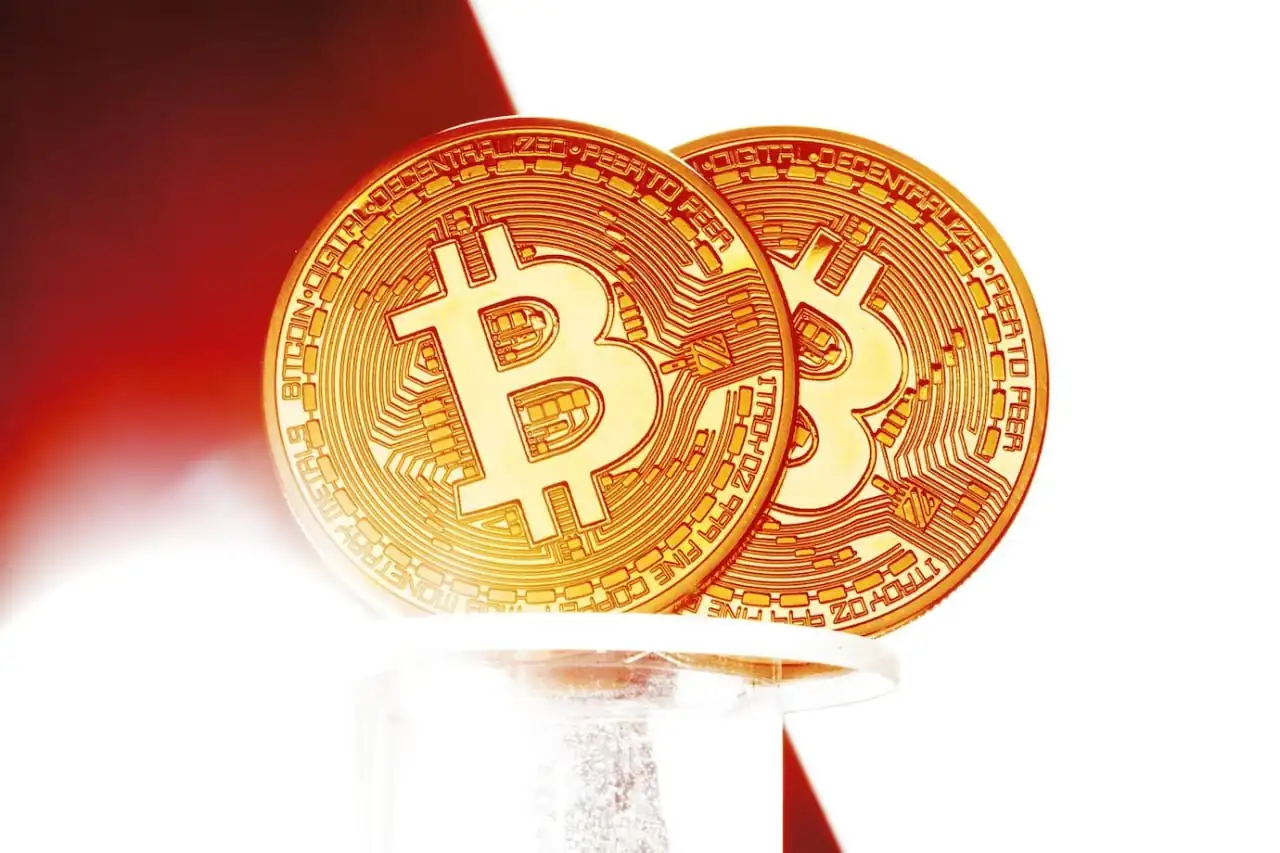In the digital age, cryptocurrency has emerged as a revolutionary financial technology, reshaping our understanding of money and its use. Cryptocurrencies like Bitcoin and Ethereum employ blockchain technology to enable secure, peer-to-peer online transactions. These digital assets have no physical form and are decentralized, thus offering a level of autonomy that traditional financial systems cannot match. However, with tens of thousands of cryptocurrencies in circulation today, a pertinent question is often asked - what does the idea of the cheapest cryptocurrency mean? The term, without context, can be somewhat misleading as it suggests an assessment based solely on face value or market price. Determining the cheapest crypto requires a multifaceted approach, considering market value, transaction fees, energy efficiency, and potential return on investment. In this article, we will explore what 'cheapness' in the context of cryptocurrency means, examining different measures of cheapness and highlighting some cryptocurrencies that, according to these measures, could be considered cheap. This exploration will provide a more nuanced understanding of what the concept means when investing in cryptocurrency.
Conceptualizing Cheapness in Cryptocurrency
To truly understand the concept of cheapness in cryptocurrency, it's crucial to look at it from multiple angles. Cheapness can mean different things to different people, and in the context of cryptocurrency, it encapsulates a variety of interpretations. One of the most common interpretations of cheapness revolves around market value. In other words, a cryptocurrency is considered cheap with a lower price per coin or token than other cryptocurrencies. For example, Bitcoin, often viewed as the gold standard of cryptocurrency, has a high market value, and as such, it's typically not considered cheap. In contrast, altcoins (alternative cryptocurrencies to Bitcoin), like Dogecoin or Cardano, often have lower market values and are therefore seen as cheaper options. However, focusing solely on market value can be misleading. While a lower price per coin might seem more affordable on the surface, it doesn't necessarily make it the most cost-effective choice. This idea brings us to another critical consideration: transaction fees.
Transaction fees are the costs associated with making transactions in a cryptocurrency network. They are used to compensate miners or validators who maintain the network's security and integrity. Not all cryptocurrencies have the same transaction fees. For instance, Bitcoin transactions can be costly due to the high demand and limited block space. On the other hand, cryptocurrencies like Stellar or Ripple have minuscule transaction fees, which can make them more affordable for frequent transactions, regardless of their market value. While market value and transaction fees are two fundamental factors in determining a cryptocurrency's cheapness, they only scratch the surface of this complex concept. To fully grasp the idea of the cheapest cryptocurrency, one must consider other factors like energy efficiency, scalability, and potential return on investment.

The Attraction of Cryptocurrencies with Lower Market Values
Cryptocurrencies or altcoins with lower market values, often termed 'low cap gems,' can appeal to investors because they allow them to receive more tokens for their money. The primary allure of these lower-value cryptocurrencies is the sheer quantity of tokens an investor can own. Many such investors buy into 'more tokens, more potential.' For instance, for the same amount you might invest in a fraction of Bitcoin, you could own thousands, if not millions, of these cheaper coins. The prospect of holding a larger quantity of tokens is enticing because if the coin's value increases, even marginally, the returns can be substantial.
Blue-Chip Example: Cardano (ADA)
A perfect example of a valuable yet relatively cheaper cryptocurrency is Cardano (ADA), which you may already hold in your PlasBit crypto wallet. Cardano is a third-generation blockchain platform with its native cryptocurrency, ADA. Despite having a lower market value than Bitcoin or Ethereum, it's not a coin to be underestimated. Cardano offers a unique approach to decentralization and security, making it a promising prospect for future growth. As of today, one ADA is priced significantly lower than one Bitcoin. However, its growth potential is clear to many investors. Cardano's ambitious roadmap, focus on sustainability, and emphasis on a research-driven approach makes it an attractive option for investors who want to own more tokens for their money but still invest in a project with solid fundamentals.
Meme Coin Example: Shiba Inu (SHIB)
We have 'meme coins' like Shiba Inu (SHIB) on the other end of the spectrum. Its value is significantly lower than most cryptocurrencies, which means investors can own billions or even trillions of tokens. While these meme coins might initially seem like a joke, they have proven their potential to yield high returns. SHIB, for example, saw a dramatic increase in value in 2021, transforming some investors into millionaires almost overnight. However, it's important to remember that investments in such coins are highly speculative and come with considerable risk. While they offer the possibility of high returns, the volatility of their value means they may not be a stable investment. Lower-value cryptocurrencies on a coin list present an enticing prospect for investors who want more tokens for their money. Whether it's a reputable project like Cardano or a volatile meme coin like Shiba Inu, these cheaper cryptocurrencies offer a unique opportunity to maximize returns. However, as with all investments, it's crucial to research and understand the inherent risks when taking advantage of the cheapest cryptocurrency.
Cryptocurrencies With Lower Transaction Fees
In crypto, transaction fees often significantly affect the overall user experience. This issue has become more apparent with the popularity of Bitcoin and Ethereum, two of the most widely used cryptocurrencies. High transaction fees can deter potential users and limit the scalability of these digital currencies. Bitcoin, for instance, has faced criticism for its notorious high transaction fees. The problem stems from the currency's design, which limits transactions processed per block. As Bitcoin's popularity soared, it increased transaction requests, leading to a backlog. Consequently, users had to pay higher fees to prioritize their transactions, resulting in exorbitant costs. Similarly, Ethereum, despite its advanced smart contract functionality, has not been immune to this issue. Ethereum's growing usage, especially in the Decentralized Finance (DeFi) sector, has led to network congestion and escalating transaction fees. The good news is that many cryptocurrencies offer lower transaction fees, providing a viable alternative for users.
The Impact of Lower Transaction Fees
Lower transaction fees in cryptocurrencies can lead to significant savings, especially for frequent traders and large-scale investors. High transaction fees can considerably eat into the profits from trading, making it less lucrative. For instance, if an investor makes 100 transactions a day, each with a transaction fee of $10, they would end up spending $1000 daily just on fees. If the transaction fee were reduced to $1, the same investor would only spend $100 on transaction fees, saving a substantial $900 daily. These savings encourage the growing use of crypto payment cards as a transaction method for those wishing to spend their digital assets without paying high fees. Lower transaction fees also make microtransactions viable. Microtransactions, small, online transactions often below $1, are generally not feasible with traditional financial systems due to high fees. Cryptocurrencies with low transaction fees make these small-scale transactions possible, opening up new avenues for digital commerce. When exploring investment opportunities in cryptocurrencies, it's crucial to consider transaction fees alongside market value. While low-value cryptocurrencies may seem attractive, high transaction fees can significantly impact potential profits. Therefore, a comprehensive understanding of both these factors is essential for making better investment decisions in the cryptocurrency market. The following cryptocurrencies are noted for their provision of lower transaction fees:
Stellar XLM
Stellar is an open-source, decentralized blockchain platform that facilitates fast, low-cost transactions. Stellar's unique consensus protocol, the Stellar Consensus Protocol (SCP), allows for quicker transaction confirmations, reducing the need for high transaction fees. The average fee on the Stellar network is 0.00001 XLM per transaction, making it an affordable choice for users.
Tron (TRX)
Tron, a blockchain-based decentralized platform, is another crypto with low transaction fees. Tron achieves this through its unique Delegated Proof-of-Stake (DPoS) consensus mechanism. This method involves a "Super Representatives" system elected by Tron crypto holders to validate transactions. Tron maintains low transaction fees using this system, with an average transaction cost of 0.2 TRX.
Litecoin (LTC)
Litecoin, initially promoted as the 'silver to Bitcoin's gold,' offers lower transaction fees than its more illustrious counterpart. Created by Charlie Lee, Litecoin was designed with speed and efficiency in mind. It achieves low transaction fees by having a faster block generation time (2.5 minutes compared to Bitcoin's 10 minutes), leading to less network congestion and, subsequently, lower fees. The average Litecoin transaction fee is around $0.04, a fraction of Bitcoin's average fee. While Bitcoin and Ethereum have faced challenges with high transaction fees, alternatives are available. Cryptocurrencies like Stellar, Tron, and Litecoin have achieved low transaction fees through unique consensus protocols and efficient transaction processing systems. As the crypto market develops, the search for more efficient and cost-effective solutions will undoubtedly continue to shape its future trajectory and define one aspect of what it means to be the cheapest cryptocurrency. Another consequence of this lower-cost trend is the more competitive pricing of traditional payment methods, such as the wire transfer service we provide at PlasBit.
Energy-Efficient Cryptocurrencies
As crypto usage and popularity grow, considering their environmental impact is becoming increasingly crucial, especially considering the cheapest cryptocurrency. One of the main factors contributing to the environmental footprint of cryptocurrencies is the energy consumed during the mining process. Cryptocurrency mining, particularly Bitcoin, is notorious for its energy consumption. Mining involves complex calculations by computers, which require significant amounts of electricity. For instance, according to the Cambridge Centre for Alternative Finance, Bitcoin's annual energy consumption is comparable to that of some countries, like Argentina. This high energy consumption contributes to global warming and puts pressure on the electricity grid, potentially leading to power shortages in areas where mining is prevalent. Moreover, cryptocurrency mining can indirectly increase carbon emissions because some areas use coal-powered electricity. Some cryptocurrencies are designed to be more energy-efficient in response to these environmental concerns. These cryptocurrencies use alternative consensus mechanisms that consume less energy than the traditional Proof of Work (PoW) system used by Bitcoin. Let's explore two such examples in more detail.
Ripple (XRP):
Ripple (XRP) is widely recognized as one of the most energy-efficient cryptocurrencies in the market. Ripple employs a consensus protocol that drastically minimizes energy consumption. This protocol requires a network of independent servers to compare transaction records, resulting in efficient energy use. Moreover, Ripple's transaction speed is relatively faster, averaging around 3-5 seconds, further contributing to its energy efficiency. This speed and energy efficiency combination allows it to process more transactions at a fraction of Bitcoin's energy consumption. Ripple's energy efficiency makes it an attractive investment option and aligns it with the global push towards sustainable practices in all industries, including cryptocurrencies. Therefore, Ripple (XRP) is a green cryptocurrency option in an increasingly environment-conscious world.
Vechain (VET):
VeChain (VET) is a prime example of an energy-efficient cryptocurrency. Unlike Bitcoin, which uses an energy-intensive Proof of Work (PoW) consensus mechanism, VeChain employs a Proof of Authority (PoA) consensus model. This highly efficient model requires significantly less computational power and energy because it's not based on competitive mining. Instead, transactions and blocks are validated by authorized nodes, making the process faster and less energy-consuming. Additionally, VeChain's dual-token system, which separates the cost of using blockchain from market speculation, further enhances the system's efficiency by preventing network congestion. The energy efficiency of VeChain not only makes it an environmentally friendly choice but aligns it with global sustainability goals. Therefore, VeChain's model offers a viable blueprint for future cryptocurrencies that balance performance with energy efficiency. Investing in energy-efficient cryptocurrencies contributes to environmental sustainability and offers potential returns. These eco-friendly cryptocurrencies could increase in popularity as the world moves towards greener alternatives. Regulatory support for energy-efficient technologies also increases their attractiveness to investors looking to explore this aspect of the cheapest cryptocurrency.
Other Ways to Measure Cheapness in Cryptocurrency
Beyond transaction fees and energy efficiency, investors should also consider the speed of transactions and the accessibility of the cryptocurrency. A faster transaction time can significantly enhance the user experience and, therefore, the potential value of the cryptocurrency. Additionally, ease of use and accessibility are critical factors. Cryptocurrencies that are user-friendly and easily accessible to a broader range of people can have a higher potential for adoption. This situation could increase demand, resulting in an appreciation of the cryptocurrency's value. Therefore, investors must evaluate these factors when choosing a cost-effective cryptocurrency.
The Future of Cheaper Cryptocurrency Options
The future of cryptocurrencies, particularly the more affordable ones, is bright and dynamic. As the world digitalizes, the need for cost-effective and efficient financial systems has become increasingly pertinent. Thanks to the advent of Layer 2 solutions and the potential drop in transaction fees through mass adoption, affordable cryptocurrencies could revolutionize the financial ecosystem and the concept of the cheapest cryptocurrency. For example, the Lightning Network for Bitcoin or Polygon for Ethereum, are secondary protocols built on a blockchain. These solutions aim to scale the blockchain's capabilities by handling transactions off the main chain, thus reducing network congestion and lowering transaction fees. For instance, Bitcoin's Lightning Network enables instant transactions at a fraction of the regular cost. Such solutions make cheaper cryptocurrencies more appealing as they offer the same functionality as their more expensive counterparts but at a reduced cost.
Additionally, the mass adoption of cryptocurrencies can potentially lead to a significant reduction in transaction fees. As demand for specific cryptocurrencies increases, the overall cost of transactions is likely to decrease. This trend emerges because as more people start using a particular cryptocurrency, the network becomes more efficient, and the cost per transaction decreases. However, it's essential to mention that while mass adoption can lower transaction costs, it can also lead to network congestion, similar to what happened with Bitcoin in 2017. Nonetheless, technological advancements like Layer 2 solutions can efficiently mitigate such issues. PlasBit believes the future of cheaper cryptocurrencies is promising. With the help of Layer 2 solutions, these digital currencies can provide the same benefits as mainstream ones but at a fraction of the cost. Furthermore, as cryptocurrencies become more universally accepted, transaction fees are expected to decrease, making these affordable cryptocurrencies even more appealing to the masses. The blend of these factors will likely lead to a more inclusive and accessible financial system.
Unraveling the True Value of the Cheapest Crypto
The concept of the cheapest crypto extends far beyond monetary value. It encompasses the energy efficiency and sustainability of the currency, which are intrinsically linked to its cost. We explored lower market value, lower transaction fees, and eco-friendly cryptocurrencies, which can be cost-effective in terms of returns on investment and mitigate environmental harm through their energy-saving features. Many such cryptocurrencies represent a paradigm shift in the crypto universe, merging financial profitability with environmental sustainability. However, the cheapest cryptocurrency will always be a relative concept, contingent on individual preferences and needs. Transaction speed might be paramount for some, while others might value accessibility. Therefore, in choosing a cryptocurrency for investment, it's crucial to consider multiple factors, including environmental impact, transaction speed, and accessibility.







